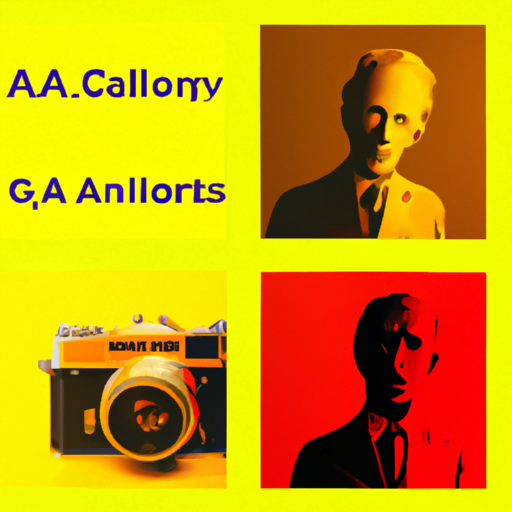
-
Table of Contents
- Creating Iconic Album Cover Art
- The Importance of Album Cover Art
- The Process of Creating Iconic Album Cover Art
- 1. Understanding the Music
- 2. Concept Development
- 3. Collaboration and Feedback
- 4. Visual Execution
- 5. Testing and Iteration
- 6. Production and Distribution
- Elements of Iconic Album Cover Art
- 1. Strong Visual Impact
- 2. Symbolism and Metaphor
- 3. Cohesion with the Music
- 4. Timelessness
- Notable Examples of Iconic Album Cover Art
- 1. The Beatles – “Abbey Road” (1969)
- 2. Pink Floyd – “The Dark Side of the Moon” (1973)
- 3. Nirvana – “Nevermind” (1991)
- 4. The Velvet Underground & Nico – “The Velvet Underground & Nico” (1967)
- Summary
Creating Iconic Album Cover Art

Album cover art has long been an essential component of the music industry. It serves as a visual representation of an artist’s work and can greatly impact the success and recognition of an album. Iconic album covers have the power to capture the essence of the music, evoke emotions, and become timeless pieces of art. In this article, we will explore the process of creating iconic album cover art, the elements that make it successful, and some notable examples that have left a lasting impact on the music industry.
The Importance of Album Cover Art
Album cover art plays a crucial role in the overall success of an album. It serves as the first point of contact between the artist and the audience, often influencing the decision to listen to the music. A well-designed album cover can create intrigue, generate interest, and establish a visual identity for the artist or band.
Furthermore, album cover art has the power to convey the mood, theme, and message of the music. It can capture the essence of the album’s content and provide a visual representation of the artist’s vision. When done right, album cover art becomes an integral part of the listening experience, enhancing the overall enjoyment and understanding of the music.
The Process of Creating Iconic Album Cover Art
Creating iconic album cover art is a multi-step process that involves collaboration between the artist, the graphic designer, and the record label. Here are the key steps involved:
1. Understanding the Music
The first step in creating iconic album cover art is to understand the music itself. The artist and the graphic designer need to listen to the album, analyze the lyrics, and discuss the themes and emotions conveyed in the music. This understanding forms the foundation for the visual representation of the album.
2. Concept Development
Once the music has been thoroughly understood, the next step is to develop a concept for the album cover. This involves brainstorming ideas, sketching rough drafts, and exploring different visual styles and techniques. The concept should align with the artist’s vision and the overall theme of the album.
3. Collaboration and Feedback
Collaboration between the artist, the graphic designer, and the record label is crucial throughout the process. Regular feedback sessions allow for the refinement of ideas and ensure that the album cover accurately represents the artist’s vision. It is important to strike a balance between artistic expression and commercial viability.
4. Visual Execution
Once the concept has been finalized, the graphic designer begins the visual execution of the album cover. This involves selecting appropriate imagery, typography, color schemes, and layout. The designer must consider the size and format of the album cover, as it needs to be visually appealing both in physical and digital formats.
5. Testing and Iteration
Before finalizing the album cover, it is essential to test its impact on the target audience. This can be done through focus groups, online surveys, or social media polls. Feedback from the audience helps identify any necessary improvements or adjustments that need to be made.
6. Production and Distribution
Once the album cover has been approved, it is ready for production and distribution. The graphic designer ensures that the artwork meets the technical specifications required for printing or digital distribution. The album cover is then integrated into the album packaging or made available online.
Elements of Iconic Album Cover Art
Iconic album cover art shares certain elements that contribute to its success and longevity. Here are some key elements that make album covers iconic:
1. Strong Visual Impact
An iconic album cover grabs attention and leaves a lasting impression. It often features bold and visually striking imagery that stands out from the crowd. The use of vibrant colors, unique compositions, and eye-catching typography can all contribute to a strong visual impact.
2. Symbolism and Metaphor
Many iconic album covers incorporate symbolism and metaphor to convey deeper meanings. These symbols can be open to interpretation, allowing the audience to engage with the artwork on a more personal level. Symbolism adds layers of complexity and intrigue to the album cover, making it more memorable.
3. Cohesion with the Music
An iconic album cover should be in harmony with the music it represents. It should reflect the genre, mood, and themes of the album. The visual elements, color palette, and typography should all align with the sonic experience, creating a cohesive and immersive package for the audience.
4. Timelessness
Iconic album covers have the ability to transcend time and remain relevant even years after their release. They capture the spirit of a particular era while also possessing a timeless quality that resonates with future generations. Timeless album covers often avoid trends and focus on creating a lasting visual impact.
Notable Examples of Iconic Album Cover Art
Throughout history, numerous album covers have achieved iconic status. Let’s explore some notable examples:
1. The Beatles – “Abbey Road” (1969)
The cover of “Abbey Road” is one of the most recognizable and imitated album covers of all time. The simple yet powerful image of the Beatles crossing the street in single file has become synonymous with the band. It perfectly captures the essence of their music and the era in which it was created.
2. Pink Floyd – “The Dark Side of the Moon” (1973)
“The Dark Side of the Moon” cover art is a minimalist masterpiece. The iconic prism and rainbow design, created by Storm Thorgerson and George Hardie, perfectly represents the album’s themes of madness, time, and the human experience. It has become an enduring symbol of Pink Floyd’s music.
3. Nirvana – “Nevermind” (1991)
The cover of “Nevermind” is a prime example of how simplicity can make a powerful statement. The image of a baby swimming underwater, reaching for a dollar bill on a fishhook, has become an iconic representation of the grunge movement and the disillusionment of the 1990s.
4. The Velvet Underground & Nico – “The Velvet Underground & Nico” (1967)
Andy Warhol’s iconic banana cover for “The Velvet Underground & Nico” is a prime example of the fusion of art and music. The simple yet provocative design, with a peelable banana sticker, perfectly captures the avant-garde nature of the album and the band’s association with the art world.
Summary
Creating iconic album cover art is a complex and collaborative process that involves understanding the music, developing a concept, and executing a visually striking design. Iconic album covers have the power to capture the essence of the
